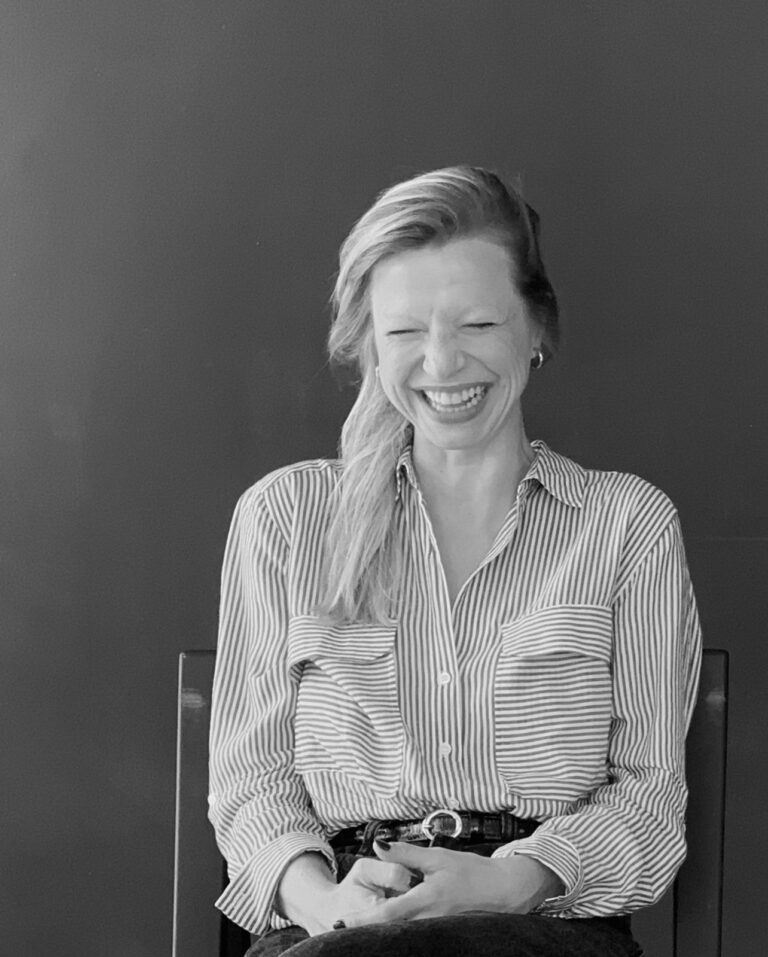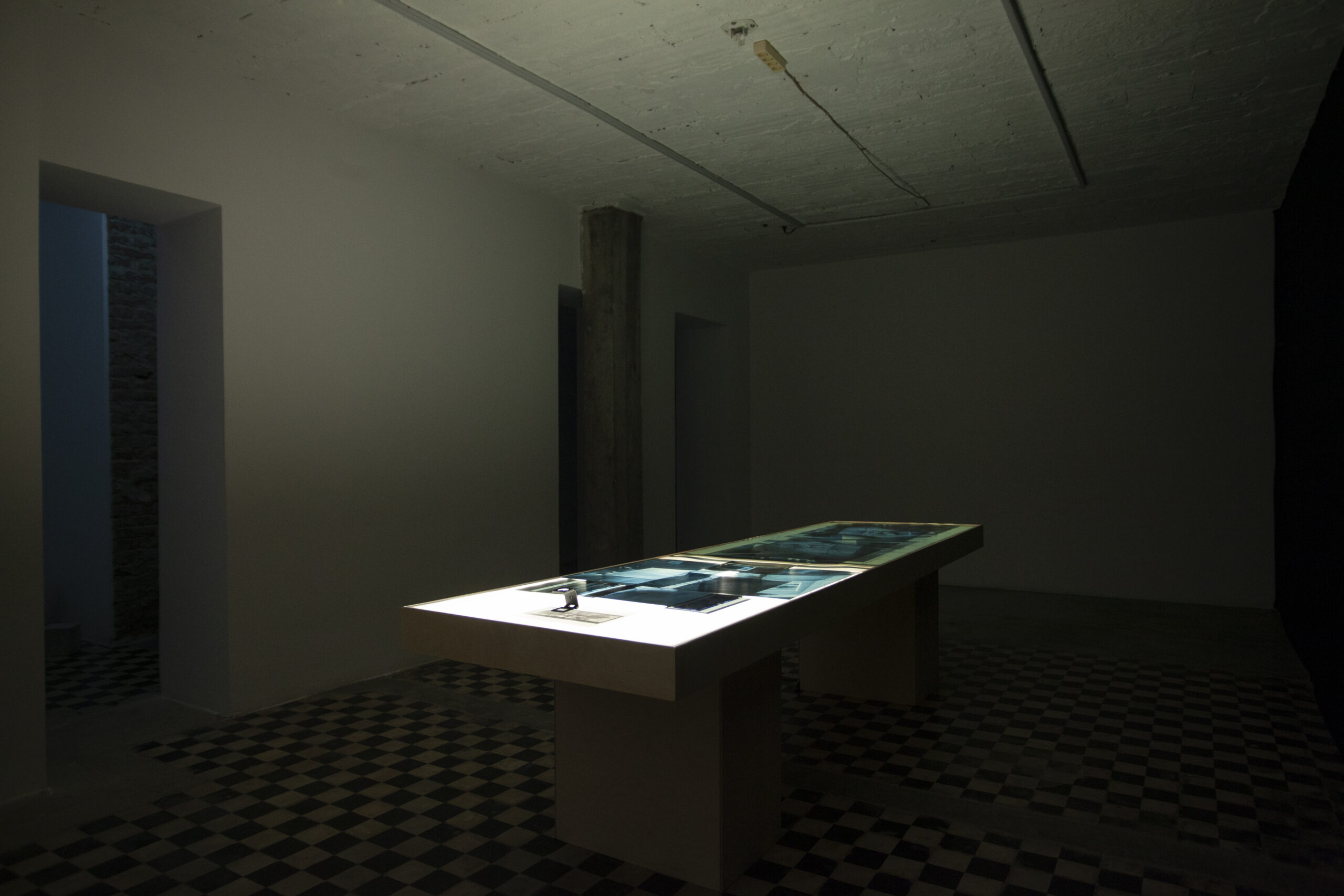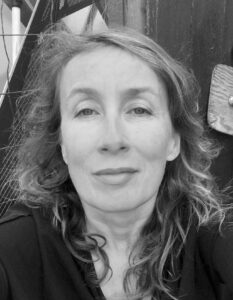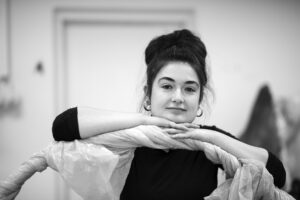Valentina Bonizzi

- abstraction
- activism
- body politics
- collaboration
- collectivity
- cultural memory
- documentary
- education
- experimental
- feminism
- fluid
- free thinking
- friendship
- history
- humour
- imaginary
- institutional critique
- intersectionality
- intimacy
- intuition
- labor
- language
- literature
- marginalized
- media art
- narration
- narrative
- participation
- patriarchy
- political
- post-truth
- reality
- Relations
- research
- resistance
- sisterhood
- social engagement
- storytelling
- video art
- writing
– born in 1982 in Milan, lives and works in Tirana – is a visual artist, writer and pedagogue. Digging into archives and communities, Valentina uses storytelling through film, writing, sound and actions in public spaces to question the politics of representation and narration. She holds a Master of Research in Visual Practices from Glasgow School of Art and a PhD (AHRC funded) from the University of Dundee (DJCAD, Visual Research Centre). Engaged with radical pedagogy, Bonizzi’s work has developed through a long-term friendship with communities in Albania, Palestine, Italy and Scotland.
Then the day arrived, the evening of the 27th of May 2022, it was a Friday1.
We were all invited, and I helped her write a text message to all the members of the association2. We meet rarely nowadays, especially with those who live outside Tirana. In the last months she and I have been going through the archive together3. Every week I would bring a piece to her apartment. She has managed to convince me since our first coffee in 2018 when she found the potential of being unfit4: “Everything, just everything you find, it’s very important!”
So, I did.
Bit by bit.
And still she waits,
As I dig.
During the first visit of the archival process, she told me that her house was very different before, since she first moved here with her partner, the artist from Shkodra. She insisted on moving to Albania. She was aware of the void: for her – an Italian, European artist – the Balkans represented the paradox of the mediation of narratives. The betrayals – the truth, lies and disguise – came later in her personal and Kafkian working life56.
When we entered the house she immediately told us that before it was yellow, bright yellow in fact…with orange sofas and big chairs with blue laddering, surrounding an uncomfortable table made of glass and steel, those you can only use a little and clean a lot. When they moved in she was happy because for a couple of years she was roaming without a base. Of her life after she left Italy in 2005, she told me about the feeling of voting as a migrant, in favour of Scottish Independence in 2014 and her first photographic work there, about generations of Italian women migrants7. Portraiture and the identity as retrospective: that is how she describes her work at the time. She would often mention how patriarchal the north is, even if it seems better to us, and she repeats: “There is still a lot of work to do!”. Then she would mention what people say is: “the region that doesn’t exist” Molise…She often describes a broken ceramic bowl stitched with an iron thread she found in an abandoned house, inside an abandoned village, that she brought to a museum89. She found the migratory in the process of repair first, and then justice in that of reparation. And the “paradox of the archive” is what she comes up with when she talks about Deheishe Camp and navigates the opaque waters of the public and the private10. When she speaks of Palestine, she always mentions Abla, the mother, and the nights spent rolling the yaprak, with the vine leaves and the rice, and later the tobacco for her husband, Adel. Together they rolled so many cigarette
that I think she became a professional! And the family archive, which she discovered with Abla while rolling behind the heavy curtains of the lounge area of the house in the refugee camp, where she was hosted. She is still working on this, she takes her time to complete the circle11. She does feel guilty sometimes, but I told her she is undertaking a spiritual journey with the work she is making, and so she should just follow it.
Then Albania. Tirana. It was her choice after all: “I do my research by diving” …this was a headfirst dive for sure I thought. Perhaps because I know this context better than the others that she told me about, I know she came here with a partner but now she doesn’t have one, which means that every day she has to answer questions about whether she is married yet or has children. Not an easy answer to repeat so often.
Every time she is asked why she moved here she answers ironically:
“I got lost”.
When they ask her:
“So are you going back now?” … immediately after he left the bright yellow house unannounced – only two months before their wedding, to go on with the same plan with someone else…
“Back to what?”…She thinks, but never out loud. She switches instead to the Balkan legend of Rozafa.
“As a woman I chose not to sacrifice for a castle, and so I was betrayed.
As a passport holder, though, I can try to share a bulevard12 around here13”.
The boulevard… and the series of stories she is stitching for and from it, the gossip, the letters and now I am very curious to see what will happen with the series of diaries in which she is involving us in14. Behind the light box table, where we are scanning the documents at the formerly yellow apartment, a couple of sculptures seemingly representing particular insects stood out elegantly. If you notice them she will start reading from her phone some stories from Tirana Bestiary15. The fluorescent insects, living in the abandoned buildings of the city, fluorescent like the words giving the title to the short stories she wrote16. The drawings were all made with children during 2020. In the stories she included all – or almost all – the people, memories and places traversing her quotidian emotional cartography of Albania. As she lives in the midst of a city undergoing gentrification, with buildings being demolished in the city capital, stories can keep track of the ground where they stand. They resist. “It’s a book for children!”, she says.
While walking to her house with my favourite biscuits, kurabie, I knew other people would be there, with her, waiting for us, on the night of a dinner that I could now say had the feeling of being historic
That was the first night I saw the table illuminated as it was at the exhibition that I saw in the Blloku area a few weeks before17. At the bazament art space where it was exhibited, I remember seeing the picture of her parents on a blueprint. They were carefully placed inside a map of tenderness18.
“In the 70s they had just become members of the communist party and they decided to take a trip to Yugoslavia.”
Perhaps this presence of other people in what she does is her way of building home, but she does lose pieces in the meantime. I wonder if this perhaps makes it – identity I mean – less retrospective and more transformative.
It was the place where we were invited.
What she now calls “academy of others”,as was written on the buzzer as we arrived at the green door, via the back entrance, behind Liceu Artistik and next to Bar Blob.
7th floor, apartment 21, was written in the invitation containing the directions for the evening of the 27th of May 2022.
Statement written by the artist.
1The day is part of the upcoming exhibition at and produced by Bulevard Art and Media Institute titled: Diaries, Lindart 1993 – 2000 – 2010 – 2022 The Albanian Women Artists Association, an editorial project by a storyteller Valentina Bonizzi (academy of others), accompanied by an art historian, Raino Isto (Yours Truly). The exhibition will last from 23 June until the 21 of September. The archive is supported by the Institute of Cultural Anthropology and Art Studies. More info in the upcoming website: www.bulevard.al.2Linda is the first and only Albanian Women Artists Association funded in 1993. Lindart is the name of the space the association has opened in 2000 until 2010 under the curatorship of Eleni Laperi (the voice of this text). The work of Linda has been marginalized since the center has closed and it is finally being exhibited this year at Bulevard Art and Media Institute in the first editorial project of Diaries.
3Diaries, Lindart & the Albanian Women Artists Association, 2022, photograph by Valentina Bonizzi, Courtesy of the artist.
4https://www.labellerevue.org/en/global-terroir/tirana/linaptitude-et-ses-potentiels-trois-recits-et-un-final-a-tirana
5Links to publications: The Transitory State of Possible Stories (2019) and Notes to a Deputy (2018)
6Valentina Bonizzi, The Transitory State of Possible Stories, 2019, installation view, photo by Genty Onuzi, courtesy Zeta Gallery and the artist
7Valentina Bonizzi, Work and Intimacy, 2008, series of portrait 80x80 c-type colour prints, courtesy of the artist.
8 https://www.thetimes.co.uk/article/valentina-bonizzi-migration-stories-scottish-national-portrait-gallery-5t6r9rzzwsj
9Valentina Bonizzi, Il Gancio (The Hook), 2013, found object and still from film, courtesy the artist and Cultural Documents
10Valentina Bonizzi, Opaque Documents, Installation at Nomas Gallery as part of NEON Digital Art Festival, 2019, photo by Valentina Bonizzi, courtesy the artist and NEON.
11https://www.arshake.com/en/interview-valentina-bonizzi/
12 Valentina is currently curating the editorial for Bulevard Art and Media institute, a newly funded space in Tirana, opened on the 23rd of September 2021 which she develops and manages with her colleague and friend Sonila Abdalli. Sonila is an architect and co-founder of Destil. Upcoming website www.bulevard.al
13Valentina Bonizzi, The Bulevard Show & Boulevard Gossips, exhibition opening and performance, 2021, photo by Giulia Daici, courtesy of Bulevard Art and Media Institute
14Diaries | Lindart & the Albanian Women Artists Association 1993 - 2022, exhibition opening, photo by Indrit Skendo, courtesy Bulevard Art and Media Institute
15Tirana Bestiary is a laboratory, a performance and a book for children, started in 2020. The book should be published within 2022. For updates check www.valentinabonizzi.com
16Valentina Bonizzi, Tirana Bestiary, 2021, performance at Liceo Artistik Jordan Misja, photograph by Giulia Dajci, courtesy the artist.
17If I were a thief, a solo show at Bazament Art Space. The table was brought to academy of others with the performance Thief Parade
18Valentina Bonizzi, Blueprint for a film script, chapter 29: If I were a thief, 2022, installation view, photo by Giulia Daici, courtesy the artist and Bazament Art Space
– lindur në vitin 1982 në Milano – jeton dhe punon në Tiranë. Është artiste pamore, shkrimtare dhe pedagoge. Duke gërmuar në arkiva dhe komunitete, Valentina përdor tregimin përmes filmit, shkrimit, zërit dhe veprimeve në hapësira publike për të vënë në dyshim politikën e përfaqësimit dhe rrëfimit. Ajo ka një Master të Kërkimit në Praktikat Vizuale nga Shkolla e Artit në Glasgow dhe një doktoraturë (financuar nga AHRC) nga Universiteti i Dundee (DJCAD, Qendra e Kërkimeve Vizuale). E angazhuar me pedagogji radikale, puna e Bonizzi është zhvilluar përmes një miqësie afatgjatë me komunitetet në Shqipëri, Palestinë, Itali dhe Skoci.
Pastaj erdhi dita, mbrëmja e 27 majit 2022, ajo e premte1.
Ishim të gjithë të ftuar, ndërsa unë e ndihmova të shkruante një mesazh për secilin anëtar të shoqatës2. Këto kohë takohemi rrallë, sidomos me ata që jetojnë jashtë Tiranës. Muajt e fundit, bashkë me të kemi qenë duke u marrë me arkivën3. Çdo javë, sillja nga një veprër në banesën e saj. Që prej kafes tonë të parë në 2018, që prej se pikasi potencialin e të qenit të pagatitura4, ia doli të më bindë: “Gjithçka, çdo gjë që arrin të gjesh, është shumë e rëndësishme!”
Kështu bëra.
Pak nga pak.
Dhe ajo ende më pret,
Teksa gërmoj.
Gjatë vizitës së parë për procesin arkivor, më tregoi se shtëpia e saj kishte qenë shumë më ndryshe më parë, që prej kohës kur ishte zhvendosur aty me partnerin e saj, artistin nga Shkodra. Kishte qenë ajo që kishte insistuar të zhvendoseshin në Shqipëri. E vetëdijshme për zbrazëtinë: për të – një artiste italiane evropiane – Ballkani përfaqësonte paradoksin e ndërmjetësimit të narrativave. Tradhtitë – e vërteta, gënjeshtrat dhe maskimet – u shfaqën më vonë në jetën e saj personale dhe në atë kafkeske të punës56.
Kur hymë në shtëpi, na tregoi menjëherë se si më parë kishte lyer me të verdhë, e verdhë e ndezur në fakt…me divane portokalli dhe karrige të mëdha me këmbë blu që rrethonin një tavolinë jo komode prej xhami dhe çeliku, nga ato që shumë i pastron e pak i shfryëzon. Në fillimet e zhvendosjes aty, ajo qe e lumtur, sepse prej disa vitesh po arrakatej pa u vendvendosur. Sa për jetën e saj pas largimit nga Italia në 2005, më tregoi ndjesinë e votimit si emigrante, në mbështetje të Pavarësisë së Skocisë në 2014, dhe punën e saj të parë fotografike atje mbi brezat e grave migrante italiane7. Portretizimi dhe identiteti si retrospektivë: kështu ma përshkruante punën e saj atëherë. Shpesh më përmendte se sa patriarkal është veriu, edhe pse ne na duket më mirë, dhe këmbëngulte: “Ka ende shumë punë për të bërë!”. Pastaj, më përmendte atë që njerëzit e quajnë si, “rajoni që nuk ekziston”, Molise… Shpesh më përshkruante një vazo qeramike të thyer që e kishte ngjitur me një fije hekuri të gjetur në një shtëpi të braktisur, brenda një fshati të braktisur, dhe që e kishte çuar në një muze89. Përmasën e mërgimit si fillim e hasi në procesin e riparimit, dhe më pas drejtësinë në atë të dëmshpërblimit. Dhe “paradoksi i arkivit” i vjen në gjuhë kur flet për Kampin Deheishe dhe kur noton nëpër ujërat e errët të publikes dhe privates10. Kur tregon për Palestinën, përmend gjithnjë Ablën, nënën me netët saj kaluar duke mbështjellë japrakun, me gjethet e rrushit dhe orizin, e më vonë edhe duhanin për burrin e saj, Adelin. Bashkë drodhën sa e sa cigare… sa mendoj se u profesioniste e asaj pune! Dhe pastaj arkivi i familjes; atë arkiv që e zbuloi me Ablën teksa dridhnin duhan pas perdeve të rënda të dhomëpritjes së shtëpisë ku ishte mikpritur, në kampin e refugjatëve. Ende po punon me të, ende po merr kohën e saj për ta qarkuar11. Ndonjëherë ndihet edhe fajtore, por i kam thënë se me punë që po bën po ndërmerr një udhëtim shpirtëror, kështu që i duhet veç t’i shkojë mbrapa.
Pastaj erdhi Shqipëria. Tirana. Në fund të fundit ishte zgjedhja e saj: “Kridhem në hulumtimet e mia” … kjo ishte përnjëmend zhytje kokë-e-këmbë… mendova. Ndoshta ngaqë e njoh këtë kontekst më mirë se të tjerët për të cilët më fliste, e di që ka ardhur këtu me një partner por tani nuk e ka, që nënkupton se përditë i duhet t’u përgjigjet pyetjeve nëse është ende e martuar apo ka fëmijë. Një përgjigje jo e lehtë për t’u përsëritur kaq shpesh.
Sa herë që e pyesin se përse u zhvendos këtu, u përgjigjet me ironi:
“Humba rrugës”.
Dhe kur e pyesnin:
“Pra, planifikon të kthehesh tani?” . . . menjëherë pasi ai qe larguar papandehur nga shtëpia me të verdhën e ndezur – veç dy muaj para dasmës së tyre, për ta vazhduar të njëjtin plan por me dikë tjetër…
“Me u kthye ku?”…Mendonte ajo, pa e thënë me zë të lartë. Ndërkohë e kthente bisedën te legjenda ballkanase e Rozafës.
“Si grua vendosa të mos sakrifikohesha për kështjellën, dhe rrjedhimisht u tradhëtova.
Të paktën, me këtë pasaportë që kam, mund të përpiqem të ndaj një bulevard12 këtejpari13.”
Bulevardi… dhe seria e tregimeve që po qep për dhe prej tij, thashethemet, letrat dhe tani jam shumë kurioze të shoh se çfarë do të ndodhë me serinë e ditarëve në të cilën na ka përfshirë14. Pas tavolinës së poçes me dritë ku po rishikonim dokumentet, te apartamenti i verdhë i atëhershëm, na spikatën në mënyrë elegante disa skulptura që të linin përshtypjen sikur përfaqësonin insekte të veçanta. Nëse i vëreje, ajo ia fillonte të të lexonte nga telefoni disa histori nga Tirana Bestiary15. Insektet fluoreshente, që jetojnë në ndërtesat e braktisura të qytetit, shndrijnë si fjalët, prej ku morën edhe titullin tregimet e shkurtra që shkroi16. Vizatimet janë bërë të gjitha me fëmijë përgjatë vitit 2020. Te tregimet i ka përfshirë të gjithë – ose pothuajse të gjithë – njerëzit, kujtimet dhe vendet që përshkojnë hartografinë e saj emocionale të Shqipërisë. Teksa jeton mu në gji të gjentrifikimit, me ndërtesa që shemben në zemër e nëpër kryeqytet, tregimet munden t’u qëndrojnë më mirë besnike truallit që i mban. Tregimet rezistojnë. “Është një libër për fëmijë!”, thotë ajo.
Kur po ecja për te shtëpia e saj me biskotat e mia të preferuara, kurabiet, e dija se njerëz të tjerë ishin tashmë aty, me të, duke na pritur, në natën e një darke, që tani them se kishte ndjenjën e të qenit historike.
Ishte nata e parë që e pashë tavolinën të ndriçuar siç ishte në ekspozitën që vizitova në zonën e Bllokut disa javë më parë17. Te hapësira artistike Bazamenti ku ishte ekspozuar, mbaj mend që pashë foton e prindërve të saj në një projekt-ide. Ishin vendosur me kujdes përbrenda një harte përzemërsie18.
“Në vitet 70’ sapo ishin anëtarësuar në Partinë Komuniste dhe vendosën të bënin një udhëtim për në Jugosllavi.”
Ndoshta kjo prani e njerëzve të tjerë në atë çka bën është mënyra e saj e ndërtimit të shtëpisë, mirëpo po ashtu ka edhe nga ata që i humbet në ndërkohë. Ndoshta, pyes veten, kjo e bën atë – identitetin dua të them – më pak retrospektiv dhe më transformues.
Ishte vendi ku ishim të ftuar.
Ajo që tani po e quan “akademia e të tjerëve”, siç ishte vendosur te zilja, kur mbërritëm mbrapa liceut artistik, pranë Bar Blob, te dera e gjelbër.
Kati 7, apartamenti 21, siç shkruhej në mesazhin që na ftonte për mbrëmjen e datës 27 maj 2022.
Tekst i shkruar nga artistja.
1Kjo ditë është pjesë e ekspozitës së fundit që mbahet te dhe e prodhuar nga Bulevard Art and Media Institute titulluar: Ditarët, Lindart 1993 – 2000 – 2010 – 2022 Shoqata e grave artiste shqiptare, një projekt editorial nga Valentina Bonizzi si tregimtare (akademia e atyre), shoqëruar nga Raino Isto (i yti përnjëmend) si historian arti. Ekspozita qëndroi e hapur nga data 23 qershor deri më 21 shtator 2022. Arkivi është mbështetur nga Instituti i Antropologjisë Kulturore dhe Studimit të Arti. Për më shumë informacion mund të vitizoni webin në ndërtim e sipër: www.bulevard.al2Lindart është shoqata e parë dhe e vetme e grave artistike shqiptare, e themeluar në 1993. Lindart është edhe emri i hapësirës së hapur nga shoqata në vitin 2000 deri në 2010 nën kurimin e Eleni Laperit (zëri i këtij teksti). Puna e Linda-s është mënjanuar meqë qendra është mbyllur dhe më në fund po ekspozohet këtë vit te Bulevard Art and Media Institute si pjesë e projektit të parë editorial Ditarët.
3Ditar, Lindart, 2022, Foto Valentina Bonizzi, kortezi e artistes.
4https://www.labellerevue.org/en/global-terroir/tirana/linaptitude-et-ses-potentiels-trois-recits-et-un-final-a-tirana
5Lidhje të publikimeve: The Transitory State of Possible Stories (2019) dhe Notes to a Deputy (2018).
6Valentina Bonizzi, Gjendja tranzitore e historive të mundshme, 2019, instalacion, foto Genty Onuzi, kortezi e Zeta Gallery dhe artistes.
7Valentina Bonizzi, Puna dhe Intimiteti, 2008, Seria e portreteve 80x80 c-type colour prints, Kortezi e artistes
8 https://www.thetimes.co.uk/article/valentina-bonizzi-migration-stories-scottish-national-portrait-gallery-5t6r9rzzwsj
9Valentina Bonizzi, Il Gancio (The Hook), 2013, Objekt dhe imazh shkëputur nga film, Kortezi e artistes
10Valentina Bonizzi, Opaque Documents, 2019, Instalacion në Nomas Gallery si pjesë e NEON Digital Art Festival, foto Valentina Bonizzi, Kortezi e artistes
11https://www.arshake.com/en/interview-valentina-bonizzi/
12Valentina po kuron ndërkohë editorialin për Bulevard Art and Media Institute, një hapësirë e hapur rishtazi në Tiranë, më 23rd shtator 2021, të cilën e zhvillon dhe drejton bashkë me kolegen dhe mikeshën e saj Sonila Abdalli. Sonila është arkitekte dhe bashkë-themeluese e Destilit. webi (në ndërtim e sipër) www.bulevard.al
13Valentina Bonizzi, The Bulevard Show & Boulevard Gossips, hapja e ekspozitës dhe performancë, 2021, foto Giulia Daici, kortezi e Bulevard Art and Media Institute
14Ditar | Lindart, hapja e ekspozitës, foto Indrit Skendo, Kortezi e Bulevard Art and Media Institute
15 Tirana Bestiary është një laborator, performancë dhe libër për fëmijët, i filluar në 2020. Libri pritet të publikohet brenda vitit 2022. Përditësimet mund t’i gjeni te: www.valentinabonizzi.com
16Valentina Bonizzi, Tirana Bestiary, 2021, Performancë në liceun artistik Jordan Misja, foto Giulia Dajci, Kortezi e artistes
17 If I were a thief, një ekspozitë personale te hapësira artistike Bazamenti. Tavolina qe sjell te akademia e atyre prej performancës Thief Parade
18Valentina Bonizzi, Blueprint for a film script, kapitulli 29: If I were a thief, 2022, Instalacion, foto Giulia Daiçi, Kortezi e artistes dhe Bazament Art Space
- abstraction
- activism
- body politics
- collaboration
- collectivity
- cultural memory
- documentary
- education
- experimental
- feminism
- fluid
- free thinking
- friendship
- history
- humour
- imaginary
- institutional critique
- intersectionality
- intimacy
- intuition
- labor
- language
- literature
- marginalized
- media art
- narration
- narrative
- participation
- patriarchy
- political
- post-truth
- reality
- Relations
- research
- resistance
- sisterhood
- social engagement
- storytelling
- video art
- writing



